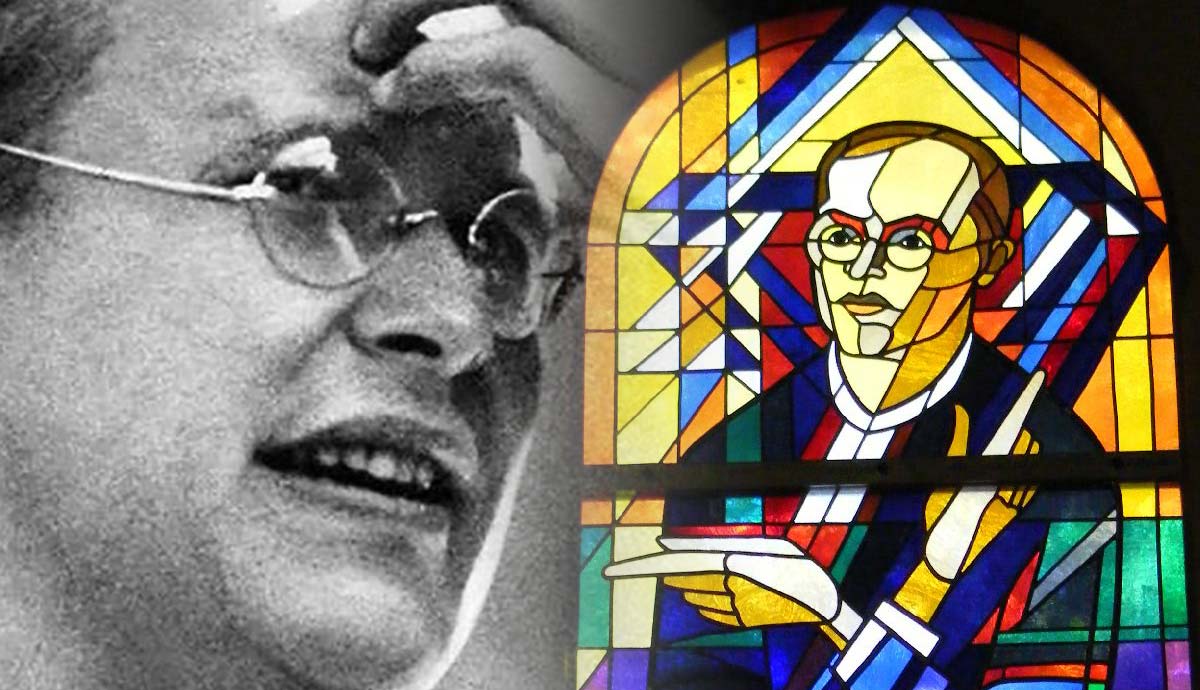
www.dailywire.com
The ‘N-Word’ Just Got A Cinnabon Employee Fired, And Earned A Violent Criminal His Freedom
A food court Cinnabon in a tiny Wisconsin village near Green Bay isn’t the kind of place you’d expect to attract international media attention from the likes of The Washington Post, The Independent, and ABC News.
There’s a reason the protagonist of “Better Call Saul” worked in a Cinnabon: It’s about as nondescript and unremarkable a job as you can imagine. Plus, you’re serving desserts all day, which normally means the clientele is pretty happy, relatively speaking, if also morbidly obese. You’re serving dessert dishes that contain enough calories to feed a football team for a week, but which are instead consumed by a single person in a single sitting. Which means that your customers go from happy, as they anticipate consuming the treat, to catatonic and comatose after having gorged themselves like raccoons in a dumpster. Overall, it’s a low-stakes, low-energy, pretty chill environment, where everyone comes and gives themselves heart disease in an orderly and peaceful manner.
So if you work there, you serve the Cinnabons, you collect a paycheck, and you go home. You’re not bothering anyone else, and no one is bothering you. That’s the expected arrangement.
But over the weekend, all of our assumptions about Cinnabon were suddenly turned on their head. It turns out that, according to every major news outlet in the country (and across the world), Cinnabon is actually ground-zero for extreme, unhinged, undiluted white supremacy. Random Cinnabon locations inside generic mall food courts in the middle of nowhere are, in fact, unmistakable evidence that white supremacists are the greatest threat facing our country, just like Joe Biden told us.
And exhibit A, as you may have seen, is this video. It begins, as all of these videos do, in the middle of the action. You have no context and no idea what happened beforehand. This is all you get. This is the footage that, by now, has been viewed tens of millions of times.
We had to bleep a lot of it, but here’s the gist:
WATCH:
Credit: @dailypaypis/TikTok.com
It’s censored in that footage, but the Cinnabon worker drops an n-bomb. She says the word. The magical word. The word that has mystical powers, like an ancient incantation that you read out of an old book you find in the attic, accidentally summoning a demonic beast from the netherworld. She says a couple of other mean things, too, we should note. She clearly understands she’s being recorded, and that she’s going to be fired for this — and she doesn’t care in the slightest. In fact, she seems thrilled at the idea that she may never again have to work in a Cinnabon.
And indeed, on the basis of this footage, there was a predictable outrage cycle. Cinnabon’s corporate headquarters announced that the woman, whose name is apparently “Crystal,” had been fired by the franchise owner. Tens of thousands of people claimed that the footage was proof that white supremacy is alive and well. And in turn, as we saw with Shiloh Hendrix, a Give Send Go fundraiser was established to support Crystal. Many people who are tired of these dumb stories, and “cancellations” in general, chipped in. As of now, it’s raised nearly $100,000, and counting. So already, in about 48 hours, she’s earned a lot more than she would’ve made in several years working at Cinnabon.
Then, as the outrage cycle continued, additional footage emerged, showing 10 seconds from before the viral footage.
Here’s what that showed:
WATCH:
Credit: @EricLDaugh/X.com
As best I can tell, from piecing together various accounts, the allegation here is that a couple of Somalis ordered a Cinnabon. And they weren’t happy with the amount of caramel on their cinnamon roll. Because people from third-world countries, where everyone is starving, come here and immediately start complaining that their cinnamon rolls don’t have enough caramel. And in response, according to the Somalis — this is their version of the story, to be clear — the Cinnabon employee allegedly made fun of the woman’s hijab, saying something to the effect of, quote, “You could see me squeezing it through that witch-craft bandana you’re wearing on top of your head.” And then, in response, the Somalis allegedly mocked the Cinnabon employee for not wearing a hijab, which is what you just heard in that last clip. The other version of the story circulating online is that the Somalis harangued the woman, unprovoked, for not wearing the hijab. What actually happened prior to the viral clip? I have no idea. And neither does anyone else commenting on the story.
And now, with all of this footage appearing online, you’ve got your predictable camps forming. On the Right, there are some who are lionizing this woman. After all, her salary has almost certainly been taxed and funneled to various Somali scams and Islamic terror groups at one point or another — so a few bad words isn’t exactly a big deal in comparison.
Meanwhile, on the Left, they’re trying to turn these Somalis into the next George and Georgette Floyd, because they didn’t get enough caramel on their dessert, and then had to endure some naughty words. And everyone’s drawing these battle lines based on a narrative that makes absolutely no sense, no matter how you look at it. We’re supposed to believe that the Cinnabon lady made fun of the woman and dropped an n-bomb because they politely asked for more caramel? They didn’t do anything else to provoke her? Really? They didn’t try to bait her, entrap her, and then start recording mid-confrontation — which happens constantly, in scenarios just like this one?
To be clear, I don’t see the Cinnabon lady as any kind of hero or role model. I also think that Cinnabon basically had no choice but to fire her. If you’re caught on camera in uniform, on the job, cussing out a customer (it doesn’t matter what precise words you use), you’re going to lose your job. No employer can take the position that cussing out customers is okay as long as the customer started it. That’s not going to be codified into any employee handbook, and shouldn’t be.
For what it’s worth, some reporters (including reporters at The Daily Wire) have been diving into this woman’s voting history. And apparently, this woman is a Democrat who voted for Kamala Harris and bragged on social media about getting the COVID shot. And because her behavior in this footage is so over-the-top — almost like a caricature of how a “racist MAGA Republican” would act — that raises the possibility that this is an elaborate stunt, or performance art, or even yet another Somali scam of some kind — a real “long con,” where she’s in on it, with the goal of raising a lot of money on Give Send Go.
But it’s not necessary to resolve any of these questions. The bigger story — which is indeed very important — is the meta question of why this Cinnabon episode is national news in the first place. It’s the same reason Shiloh Hendrix was in the news a few months ago. Major news outlets aren’t interested in the fact that a minimum-wage fast food employee had a verbal spat with customers (who were almost certainly provoking her). No one cares about that. It’s the kind of thing that happens a million times a day. It’s only a story because of the magical power we’ve imbued in one specific racial slur.
And when I say “magical power,” I’m not just talking about how, if you say the so-called “n-word,” you’ll get fired from your job, demonetized on YouTube, and cast out from polite society. We all know about those consequences. I’m also talking about the fact — which is now proven, beyond any doubt — that if you say the “n-word,” then your life is forfeit. You lose your constitutional rights. Your civil liberties are meaningless. Black people have the legal authority to murder you if you say that particular naughty word in front of them. A jury verdict in Portland has just made that clear.
Here’s the background. This is from a local Fox station in Portland, reporting on a stabbing back in July of this year.
WATCH:
Credit: @Fox12Oregon/YouTube.com
At the time, it seemed like a pretty open-and-shut case. A black man named Gary Edwards — who had previous convictions for attempted second-degree assault, and who had been sentenced to three years in prison for another stabbing on the public transit system — had seriously injured yet another unarmed individual, named Gregory Howard, who was sitting on a bench. And in a rare case of Portland police actually doing something, Gary Edwards was quickly arrested and charged with second-degree assault.
Web Archive. Oregon Live.
Web Archive. Oregon Live.
But just five months later, Gary Edwards has been acquitted. For stabbing and nearly killing a white guy in broad daylight, he won’t face any punishment whatsoever. And that’s not because there was any dispute about whether Edwards had stabbed the victim. He admitted it.
What happened is that the victim, after the attack, was captured on a police body camera saying the n-word. And based on that fact alone — the fact that the victim had uttered the unmentionable word — Gary Edwards was let off the hook.
This is reporting from The Oregonian.
An Old Town stabbing case ended in defeat for Multnomah County prosecutors once jurors learned the wounded man had been videoed uttering a racist slur in the struggle’s aftermath. … Transit cameras showed Edwards, a fixed-blade knife clasped at his side, approaching Howard from behind as he sat on a bench. The video has no sound, but Howard springs up and pushes Edwards as soon as he sees him. The duo scuffle against a wall for a brief moment, ending with Edwards stabbing Howard in the shoulder. … Defense attorney Daniel Small said the most relevant evidence was recorded later, when security officers heard the wounded man shouting the racist slur and captured it on their body cameras as he described the incident. Edwards is Black; Howard is white. Both are alike in other respects. Each is 43 years old. … [The defense attorney] said Edwards was simply approaching Howard and offering a polite trade: his knife for some cigarettes. ‘What other than racism could explain why Mr. Howard perceived hatred, animosity and aggression from a complete stranger,’ [the defense attorney] asked the jury Oct. 30.
Oh, I don’t know — maybe it was the fact that Gary Edwards approached the victim from behind, with a knife out? Maybe that’s why the victim “perceived aggression,” and immediately pushed Edwards away? Maybe he didn’t want to get randomly stabbed, just like the other person that Edwards stabbed on the public transit system? Maybe he didn’t buy the idea that the guy wanted to “trade” his knife, which is complete nonsense? But when you’re a defense attorney for a psychotic, violent vagrant, this is the kind of defense you have to launch. You have to sincerely claim that your guy — with a history of stabbing people — crept up behind someone with a knife out because he wanted to engage in some old-fashioned bartering, like they’re at a trading outpost on the frontier in 1843.
Given the facts of this case, there is no doubt whatsoever that Gary Edwards was acquitted because his victim was white, and because his white victim used a racial slur after the fact. If the victim had been black and used this particular word, either before or after the attack, no one would’ve batted an eye. But because the victim was white, he had it coming.
In the eyes of a Portland jury, if you’re white, the use of an anti-black slur means that you deserve to die — even if you use that slur after you’re attacked.
Of course, in a free country, you should be able to use racial slurs any time you want, without fear that you’ll be murdered if you do so. There should be no word that you aren’t allowed to say. There is no combination of syllables that you should be banned from uttering. I’ve seen a lot of commentators emphasizing the fact that Howard only used the slur after the attack, which is obviously very important to mention, because it highlights how depraved this all is. But we should also make it clear that, if Howard had been calling this guy a slur before the attack, that shouldn’t matter, either. Bad words do not justify violence. Period. If someone is approaching you from behind with a knife in his hand — or with nothing in his hands at all — you can call him whatever mean name you can think of. That doesn’t give him a license to try to kill you.
Racial slurs are bad. Vulgarity is bad. I don’t think people should use vulgarity in public. I will say n-word instead of the actual word for the same reason I say f-word or b-word. It’s a little silly and arbitrary. Even by referencing the first letter in the word, you’re still conveying the word. So you might as well just say it. But I also believe in following certain rules of decorum. These are not legal rules. They are just standards of behavior. But those standards should apply to all vulgarity, not just one particular vulgarity. And obviously you can condemn vulgarity without saying that someone should die — or go to prison — because they used them. And indeed, if you can’t do that, then you’re not living in America anymore. You’re living in a country more like Somalia.
Shiloh Hendrix knows that very well. Her trial date has been set after she used the forbidden word in a playground in Minnesota. In case you don’t remember that story: A Somali child stole her property. A Somali man (with a disturbing criminal record) began harassing her. And she finally snapped. She was clearly tired of Somalis having taken over her community. She was tired of them trying to provoke her. And faced with this provocation, she made her disapproval very, very clear.
But in Little Mogadishu, white people aren’t allowed to demonstrate their disapproval for Somalis anymore — whether they’re using offensive language or not. That’s why local authorities are currently trying to put Shiloh Hendrix in prison. In August of next year, she’ll go on trial for several counts of disorderly conduct, even though she didn’t cause any kind of public disturbance. She barely even raised her voice. She was directing her frustration at the man who was filming her and berating her after her property was stolen. But because she used a bad word and failed to show proper deference to the invaders who have destroyed Minnesota, she’s probably going to prison.
That is the state of the First Amendment in a country that’s imported an awful lot of people who don’t have a First Amendment in the countries where they came from. That is the state of “free speech” in a country where immigration authorities are constantly being hounded, harassed, and even shot at — from California to Minnesota to Chicago to New Orleans to New York — simply for doing their job, enforcing the border, and deporting illegal aliens who have no right to live in this country.
Put simply, without immigration enforcement, we don’t have a First Amendment. At the same time, this isn’t simply a question of illegal migration. The problem goes a lot deeper than that. A black guy in Texas was awarded over half a million dollars in donations for stabbing a white kid named Austin Metcalf to death. And, as they donated money, thousands of black people left comments celebrating, in effect, the death of another “evil white kid.” That happened just a few months ago. In America, black people are given hundreds of thousands of dollars and a literal get-out-of-jail-free card if they hear a word that hurts their feelings.
Before any major news outlet says another word about a random lady working in a Cinnabon, it would be interesting to see them answer this question: Why was Karmelo Anthony allowed to receive his diploma? He killed an unarmed white kid and then lied to police about stashing his knife in the bleachers. That seems like the kind of thing that should disqualify you from graduating. And while we’re at it, what evidence was there that Derek Chauvin actually killed George Floyd? Even the jury told CNN they didn’t actually think Chauvin killed Floyd. They convicted Chauvin because, in their view, he didn’t demonstrate enough compassion to a man who was clearly overdosing. And while we’re at it, why were the prosecutors allowed to lie to the jury about the relative amount of fentanyl in Floyd’s system by comparing his blood samples to samples from overdose victims that were taken long after their deaths?
Until we get serious answers to these questions, don’t talk to us about the Cinnabon woman who had a bad day. No, she’s not a hero or a martyr. But she is the predictable result of decades of anti-white propaganda that has destroyed far too many lives. And like the Cinnabon woman, we’re all tired of it.
















